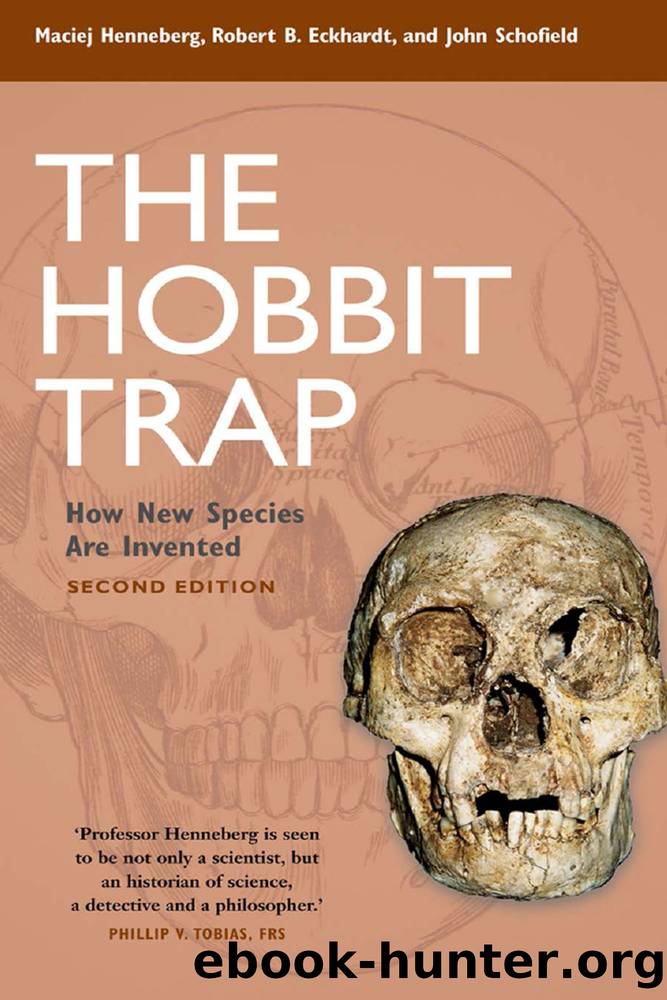The Hobbit Trap by unknow

Author:unknow
Language: eng
Format: epub
ISBN: 9781315418278
Publisher: Taylor & Francis (Unlimited)
Published: 2011-07-15T00:00:00+00:00
7
The More Things Change
DOI: 10.4324/9781315418285-7
Professor Henneberg arrived in Indonesia on Sunday, 22 July 2007 for a three-day meeting formally titled: International Seminar on Southeast Asian Paleoanthropology. Festivities began that night in Kraton, the official residence of the Sultan of Yogyakarta, to the strains of traditional orchestral music, dancing and dining.
The conference proper, attended by about 50 international guests â some with spouses or partners â and a similar number of Indonesian participants, began next morning with the first presentations of papers.
First-day topics followed general themes in paleoanthropology. The second day dealt with papers specifically concerning finds at Liang Bua and elsewhere on Flores. The third day was devoted to Southeast Asian anthropology.
Mike Morwood, the chief advocate of the ânew speciesâ theory, was there. When asked about Peter Brownâs absence, Morwood dismissed the enquiry with the comment that Brown hadnât played any major role in the Liang Bua project and had only been involved with technical description of the LB1 skeleton.
Other notables present included Dean Falk, whose brain endocast analysis supported the ânew speciesâ theory; Chicagoâs Robert Martin, with his independently produced papers against it; Dr John De Voss, from the Netherlandsâ Museum of Natural History, who was also a ânew speciesâ supporter; and Professor Christoph Zollikofer from the University of Zurich, who was of two minds about the âHobbit.â Several Chinese experts included Professor Zhao Linxia from the Institute of paleoanthropology in Beijing.
From Europe came Professor Marie de Lumley, a respected paleoanthropologist specialising in hominid fossils from the Mediterranean. There was also Professor James L. Phillips, an archaeologist from Chicagoâs Field Museum, who did not support the ânew speciesâ theory. Professor Russel Tuttle of the University of Chicago supported the Pathology Groupâs stance. A senior representative of the International Union of Anthropological and Ethnological Sciences, Professor Brunetto Chiarelli from Florence, had not done research of his own but came out in general support of the ânew speciesâ adherents.
Indonesians were there in force, represented by about thirty academics holding various views, most prominent, of course, being Professor Teuku Jacob, president of the organising committee. He would preside at the ceremonies but was too frail to make the proposed trip to Flores.
Both sides of the debate were very well represented. Unfortunately, the chief subject, the diminutive LB1 skeleton, was not.
Maciej Henneberg:
When we approached Mike Morwood and asked why the skeleton of LB1 had not been brought before the assembly of international experts, his answer was: the âHobbitâ had previously been damaged in transit to Yogyakarta, and he hadnât wanted to risk further damage moving it again.
That was a huge letdown, as a whole day was devoted to the specimen and its significance in the understanding of human evolution. The find, the claim and the debate had swung the international spotlight on human evolution from Africa to Indonesia. Despite the fact that Southeast Asia had taken centre stage in the late 19th century with the discovery of Homo erectus on Java, since then the spotlight had swung to Africa. For the last half
Download
This site does not store any files on its server. We only index and link to content provided by other sites. Please contact the content providers to delete copyright contents if any and email us, we'll remove relevant links or contents immediately.
Evelina by Fanny Burney(26801)
The Secret History by Donna Tartt(18857)
Who'd Have Thought by G Benson(16497)
All the Missing Girls by Megan Miranda(15590)
Eleanor and Park by Rainbow Rowell(15360)
A Web of Lies 27 by Bella Forrest(13768)
Fallen Heir by Erin Watt(13364)
The Cruel Prince (The Folk of the Air Book 1) by Holly Black(12342)
Shadow Children #03 - Among the Betrayed by Margaret Peterson Haddix(11841)
Twisted Palace by Erin Watt(11090)
Warriors (9781101621189) by Young Tom(10746)
Simon vs. the Homo Sapiens Agenda by Becky Albertalli(10260)
Caraval Series, Book 1 by Stephanie Garber(10162)
La Belle Sauvage by Philip Pullman(10103)
Six of Crows by Leigh Bardugo(10056)
They Both Die at the End by Adam Silvera(9723)
P.S. I Still Love You by Jenny Han(9522)
Fangirl by Rainbow Rowell(9100)
A Girl in a Million by Betty Neels(8648)
